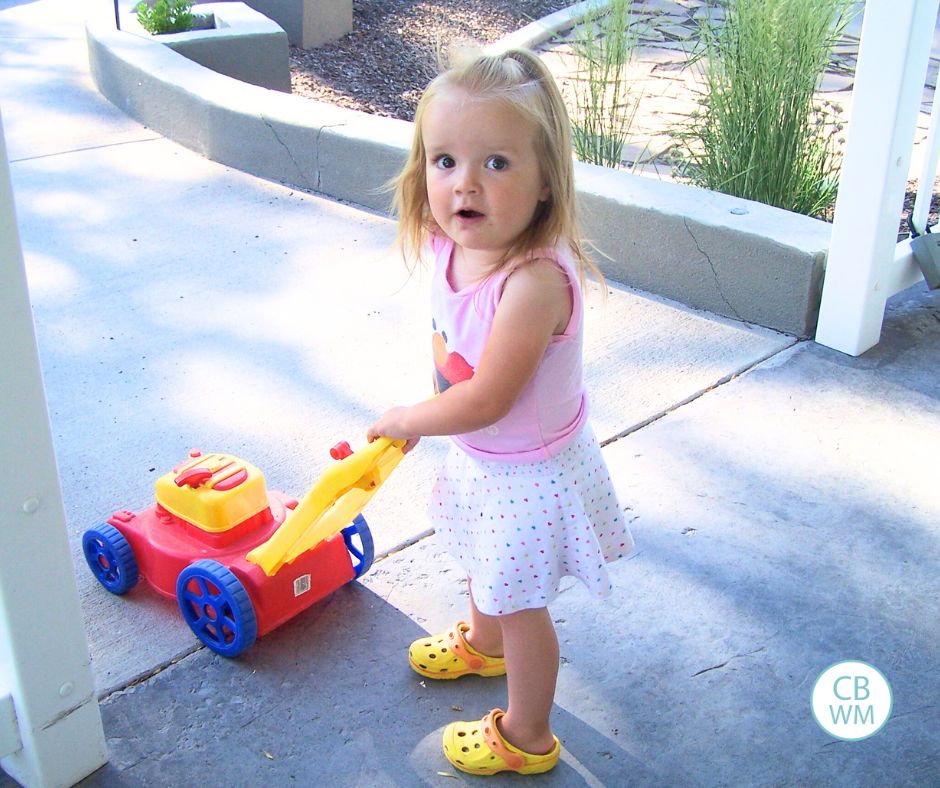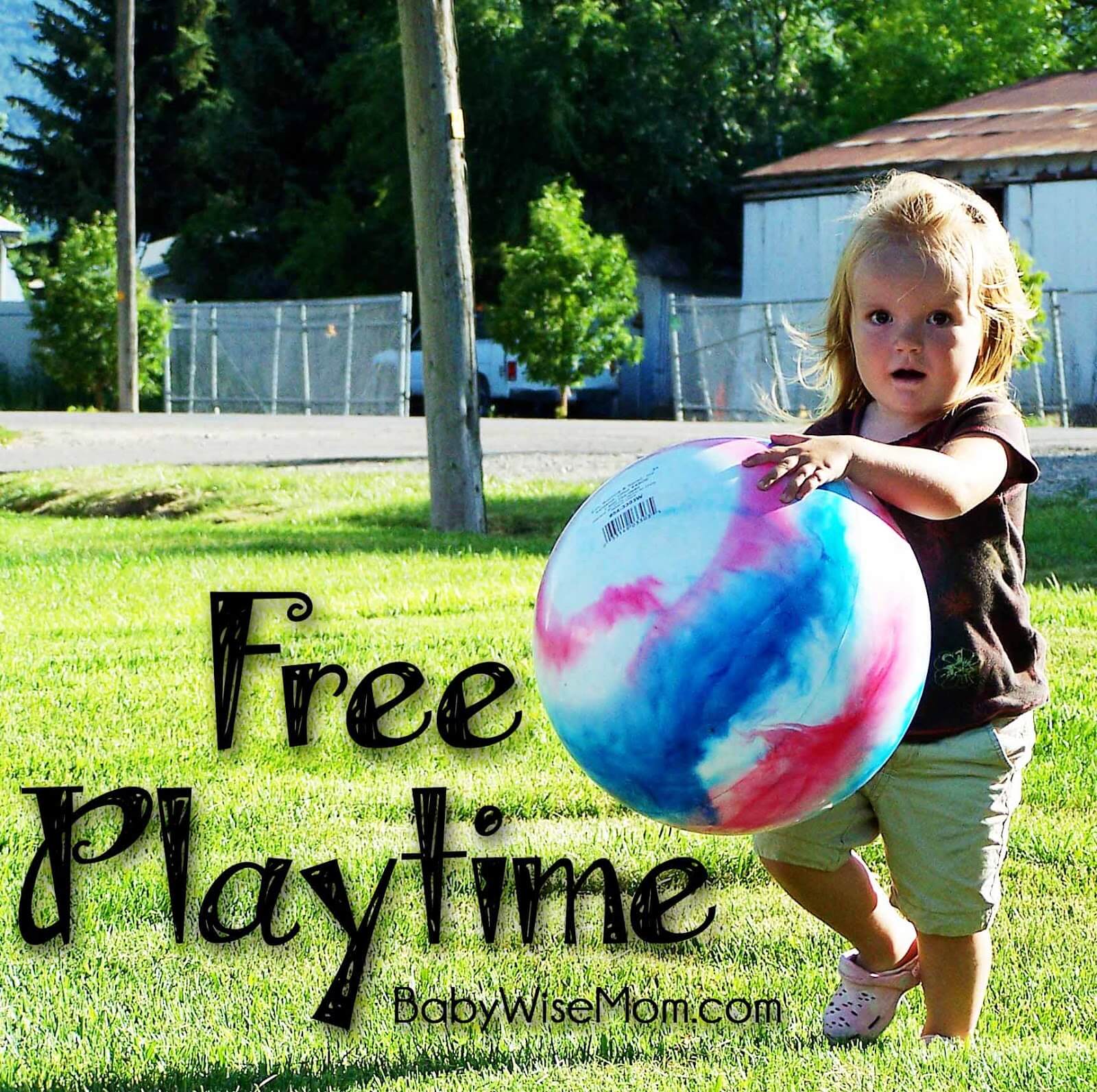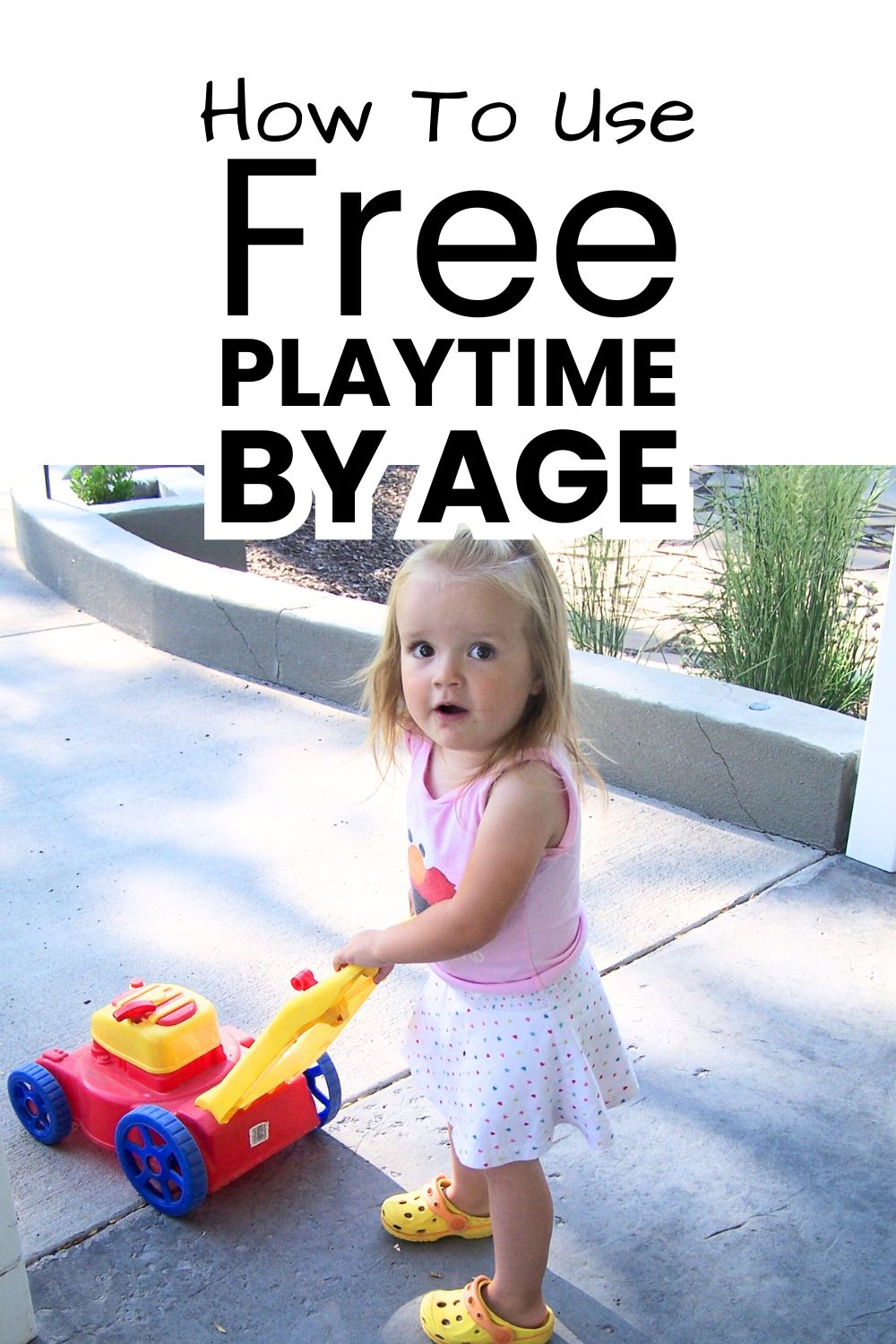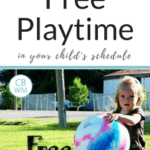Learn how to use free playtime effectively in your child’s daily routine. Discover age-specific tips, real-life examples, and how to foster creativity and independence through unstructured play.

Free playtime is a great tool to turn to at your convenience. For us, free playtime would often move around in our day, though it typically happened at a certain time of day. For my children, free playtime happened when mommy needed to get something important done. This was usually dinner.
Because my children had regular nap(s) and regular independent playtime, I could do my “chores” and hobbies around the house during these times. I could clean; I could weed. I would write articles for my blog. I would answer reader questions. I could sew, scrapbook, read, and make jewelry. I could exercise. I can do the things that interest me and the things I need to get done during these regular, scheduled times.
Read more about Independent Playtime here: How To Get Your Child to Happily Play Alone
Dinner time, however, fell at a time when there were no naps and no independent play going on. I used this slot in the day for free time. Free play is great for helping establish creativity and imaginative play.
Read more about how to manage dinner prep time here: Managing Dinner Prep Time
Post Contents
For the Pre-toddler
Babywise II talks about free playtime for your pretoddler (page 79). This is not a time for baby to roam the house looking for fun. It is a time you tell your child to play with certain items at what BW II refers to as a playcenter. A child’s “job” in life right now is really all about play. It is how they learn.
In the pretoddler months, keep toys simple for free playtime. It can be blocks, balls, books, etc. Be sure they are toys that are age-appropriate so your child doesn’t get frustrated in either direction (too easy or too hard).

For the Toddler
Toddlerwise talks about free playtime for your toddler (page 49). This is when your child has the freedom to choose what he wants to play with. You carve out the time slot, but he decides what he wants to play with. You don’t let him jump from toy to toy. Let him learn to have an attention span.
Toddlers can do a variety of things for free playtime. They can play outside (remember to supervise), play with toys, puzzles, read books, color, playdough, etc.
For the Preschooler
Preschoolwise talks about free playtime for your preschooler (97). Free playtime is a time your preschooler chooses the activity. You choose when free playtime happens, but your preschooler decides what to play with.
Preschoolers can also do a variety of things during free playtime. They can play outside (remember to supervise), play with toys, puzzles, read books, color, etc.
Clean-up
No matter the age of your child, be sure he is involved in cleaning up. For the 12 month old, 99% of the toys are going to be cleaned up by mom. Sometimes it might move down to 95% (depending on how many toys are out), but don’t expect a huge help. Not because your child isn’t trying, but because he just isn’t as fast as you are. As your child gets older, you can require more. For example, when Brayden was 3 years old, he was required to clean up all of his trucks after playtime all by himself. I then helped with the rest of the toys. He did the trucks alone before I started to help at all. Some days, he cleaned up all of his toys by himself when he was done. For free playtime, fewer toys will be out and you might be able to require your child to clean up all of the toys. Teach your child that playtime is not over until the toys are cleaned up. Make sure you calculate cleaning time into your schedule.
We always cleaned up with Brayden, and he is an excellent helper. He never forgets to clean up when he is done. Kaitlyn, at 15 months, was also a good helper. I would say, “Time to clean up!” and I then sang a clean up song. Everyone does their part.
My Examples
Here are some examples from my house for free playtime.
- Kitchen. In the kitchen, I had a couple of Leapfrog toys on the fridge. One is the barn and one is the alphabet (incidentally, I love Leapfrog, and no, I have no affiliation). My kids loved these things. I also had magnetic letters and numbers. This is my kitchen “station.” Some children might also find it interesting to play with pots and pans and spoons. The pre-toddler often finds various kitchen items fun, and the pre–schooler can do imaginative play. You can also easily set up art projects in the kitchen for your child to do at the table while you work on other things in the kitchen.
- Family Room. In the family room, we had a large closet. This closet contained games, puzzles, and art supplies, among other things. We had puzzles that were age-appropriate for each child. We had a Karaoke machine the kids often enjoyed. We kept our library books in there. We had a tote full of various toys they cold play with. Sometimes for Brayden, free playtime could be playing Mario Kart in the family room once he was old enough for video games.
- Master Bedroom. I had a small tote with a few toys. This was a station I would pull out if I needed to be in my bedroom doing something.
- Outside. We had a fully fenced-in backyard. In that yard, there was a fully fenced-in playground area with a swingset, gravel, and sandbox (if you are wondering why it is fenced in, it is because of one of our dogs who was a lab and prone to destroying things with her teeth). The kitchen was also by the backyard so when I was in the kitchen, the kids could be out there and I could hear everything they said. The outside was actually rarely used for free playtime–we use it more for sibling and family time (though you can have sibling free playtime where they have free playtime together).
Free Playtime Length
Those are my typical free playtime activities. You might be wondering about length. There is no definite number given in any of the books. You want it to be long enough that learning can happen. The sample schedules in Toddlerwise and Preschoolwise show free playtime as lasting for 30 minutes at a time. For some children, free playtime can happen more than once in a day. Our free playtime in our house was usually around 20 minutes, though it could be as short as 15 minutes or as long as 30 minutes. Free playtime really can happen any time you don’t have something structured happening (such as learning time, independent play, naps, and meals).
Remember to let your schedule serve you. Let free playtime serve your family and the needs of everyone in it.
Related Posts
- Let Your Schedule Serve You, You Don’t Serve Your Schedule
- A Parent’s Complete Guide to Structured Playtime
- Play Time for Children: Baby-Kids
- Importance of Free Play Time & How To Fit It In
Reader Comments/Thank Yous
- Don & Denise Sullivan said…
Thanks for clarifying this! I was wondering about how it worked and I can see what I’m doing right and not so right. haha.
Babywise Mom said…
You are welcome Denise!
Reader Questions
- bradysmom said…
My LO is 6.5 months, and maybe this will make more sense when he is older, but I don’t understand the difference between independent play time; free play time; and blanket time. Can you clarify? THank you!
Babywise Mom said…
Bradysmom, I will do a post on that. But Independent play is alone, whereas free playtime can be in the presence of others or even with others (like siblings). Blanket time and free playtime could feasibly be combined. The differences do grow more as they get older because at 6.5 months, they don’t really choose what to play with, which is a part of free playtime. - The Traveling Turtle said…
I think I have the same clarification question, bradysmom. I have a 5 1/2 month old and we typically let her play in her excersaucer or on her activity mat for about 10 – 15 minutes every night while we get her dinner and our own dinner ready. I have done this with her from the get go though – always given her time that she plays when I am not in the room. Even if it is just to be in the swing or watch her mobile. Is that considered independent play time? I am guessing she can’t really have free play time right now since she can only roll over and sit up – it makes her somewhat limited in the things she can really do on her own.
Babywise Mom said…
Traveling Turtle,If she is alone, I would count that as independent playtime. See the independent playtime post for more on that. I outline acceptable mediums.

This post first appeared on this blog in August of 2008

